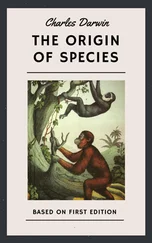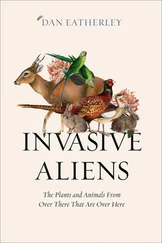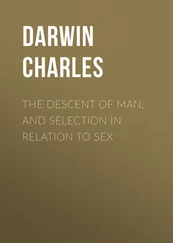Charles Darwin - The Variation of Animals and Plants under Domestication — Volume 1
Здесь есть возможность читать онлайн «Charles Darwin - The Variation of Animals and Plants under Domestication — Volume 1» — ознакомительный отрывок электронной книги совершенно бесплатно, а после прочтения отрывка купить полную версию. В некоторых случаях можно слушать аудио, скачать через торрент в формате fb2 и присутствует краткое содержание. Жанр: foreign_antique, foreign_prose, на английском языке. Описание произведения, (предисловие) а так же отзывы посетителей доступны на портале библиотеки ЛибКат.
- Название:The Variation of Animals and Plants under Domestication — Volume 1
- Автор:
- Жанр:
- Год:неизвестен
- ISBN:нет данных
- Рейтинг книги:5 / 5. Голосов: 1
-
Избранное:Добавить в избранное
- Отзывы:
-
Ваша оценка:
- 100
- 1
- 2
- 3
- 4
- 5
The Variation of Animals and Plants under Domestication — Volume 1: краткое содержание, описание и аннотация
Предлагаем к чтению аннотацию, описание, краткое содержание или предисловие (зависит от того, что написал сам автор книги «The Variation of Animals and Plants under Domestication — Volume 1»). Если вы не нашли необходимую информацию о книге — напишите в комментариях, мы постараемся отыскать её.
The Variation of Animals and Plants under Domestication — Volume 1 — читать онлайн ознакомительный отрывок
Ниже представлен текст книги, разбитый по страницам. Система сохранения места последней прочитанной страницы, позволяет с удобством читать онлайн бесплатно книгу «The Variation of Animals and Plants under Domestication — Volume 1», без необходимости каждый раз заново искать на чём Вы остановились. Поставьте закладку, и сможете в любой момент перейти на страницу, на которой закончили чтение.
Интервал:
Закладка:
We will briefly run back through the historical records. The materials are remarkably deficient between the fourteenth century and the Roman classical period. (1/3. Berjeau 'The Varieties of the Dog; in old Sculptures and Pictures' 1863. 'Der Hund' von Dr. F.L. Walther, Giessen 1817 s. 48: this author seems carefully to have studied all classical works on the subject. See also Volz 'Beitrage zur Kulturgeschichte' Leipzig 1852 s. 115, 'Youatt on the Dog' 1845 page 6. A very full history is given by De Blainville in his 'Osteographie, Canidae.') At this latter period various breeds, namely hounds, house-dogs, lapdogs, etc, existed; but, as Dr. Walther has remarked, it is impossible to recognise the greater number with any certainty. Youatt, however, gives a drawing of a beautiful sculpture of two greyhound puppies from the Villa of Antoninus. On an Assyrian monument, about 640 B.C.,an enormous mastiff (1/4. I have seen drawings of this dog from the tomb of the son of Esar Haddon, and clay models in the British Museum. Nott and Gliddon, in their 'Types of Mankind' 1854 page 393, give a copy of these drawings. This dog has been called a Thibetan mastiff, but Mr. H.A. Oldfield, who is familiar with the so-called Thibet mastiff, and has examined the drawings in the British Museum, informs me that he considers them different.) is figured; and according to Sir H. Rawlinson (as I was informed at the British Museum), similar dogs are still imported into this same country. I have looked through the magnificent works of Lepsius and Rosellini, and on the Egyptian monuments from the fourth to the twelfth dynasties (i.e. from about 3400 B.C. to 2100 B.C.) several varieties of the dog are represented; most of them are allied to greyhounds; at the later of these periods a dog resembling a hound is figured, with drooping ears, but with a longer back and more pointed head than in our hounds. There is, also, a turnspit, with short and crooked legs, closely resembling the existing variety; but this kind of monstrosity is so common with various animals, as with the ancon sheep, and even, according to Rengger, with jaguars in Paraguay, that it would be rash to look at the monumental animal as the parent of all our turnspits: Colonel Sykes (1/5. 'Proc. Zoolog. Soc.' July 12, 1831.) also has described an Indian pariah dog as presenting the same monstrous character. The most ancient dog represented on the Egyptian monuments is one of the most singular; it resembles a greyhound, but has long pointed ears and a short curled tail: a closely allied variety still exists in Northern Africa; for Mr. E. Vernon Harcourt (1/6. 'Sporting in Algeria' page 51.) states that the Arab boar-hound is "an eccentric hieroglyphic animal, such as Cheops once hunted with, somewhat resembling the rough Scotch deer-hound; their tails are curled tight round on their backs, and their ears stick out at right angles." With this most ancient variety a pariah-like dog coexisted.
We thus see that, at a period between four and five thousand years ago, various breeds, viz. pariah dogs, greyhounds, common hounds, mastiffs, house-dogs, lapdogs, and turnspits, existed, more or less closely resembling our present breeds. But there is not sufficient evidence that any of these ancient dogs belonged to the same identical sub-varieties with our present dogs. (1/7. Berjeau gives facsimiles of the Egyptian drawings. Mr. C.L. Martin in his 'History of the Dog' 1845 copies several figures from the Egyptian monuments, and speaks with much confidence with respect to their identity with still living dogs. Messrs. Nott and Gliddon ('Types of Mankind' 1854 page 388) give still more numerous figures. Mr. Gliddon asserts that a curl-tailed greyhound, like that represented on the most ancient monuments, is common in Borneo; but the Rajah, Sir J. Brooke, informs me that no such dog exists there.) As long as man was believed to have existed on this earth only about 6000 years, this fact of the great diversity of the breeds at so early a period was an argument of much weight that they had proceeded from several wild sources, for there would not have been sufficient time for their divergence and modification. But now that we know, from the discovery of flint tools embedded with the remains of extinct animals in districts which have since undergone great geographical changes, that man has existed for an incomparably longer period, and bearing in mind that the most barbarous nations possess domestic dogs, the argument from insufficient time falls away greatly in value.
Long before the period of any historical record the dog was domesticated in Europe. In the Danish Middens of the Neolithic or Newer Stone period, bones of a canine animal are embedded, and Steenstrup ingeniously argues that these belonged to a domestic dog; for a very large proportion of the bones of birds preserved in the refuse consists of long bones, which it was found on trial dogs cannot devour. (1/8. These, and the following facts on the Danish remains, are taken from M. Morlot's most interesting memoir in 'Soc. Vaudoise des Sc. Nat.' tome 6 1860 pages 281, 299, 320.) This ancient dog was succeeded in Denmark during the Bronze period by a larger kind, presenting certain differences, and this again during the Iron period, by a still larger kind. In Switzerland, we hear from Prof. Rutimeyer (1/9. 'Die Fauna der Pfahlbauten' 1861 s. 117, 162.), that during the Neolithic period a domesticated dog of middle size existed, which in its skull was about equally remote from the wolf and jackal, and partook of the characters of our hounds and setters or spaniels (Jagdhund und Wachtelhund). Rutimeyer insists strongly on the constancy of form during a very long period of time of this the most ancient known dog. During the Bronze period a larger dog appeared, and this closely resembled in its jaw a dog of the same age in Denmark. Remains of two notably distinct varieties of the dog were found by Schmerling in a cave (1/10. De Blainville 'Osteographie, Canidae.'); but their age cannot be positively determined.
The existence of a single race, remarkably constant in form during the whole Neolithic period, is an interesting fact in contrast with what we see of the changes which the races underwent during the period of the successive Egyptian monuments, and in contrast with our existing dogs. The character of this animal during the Neolithic period, as given by Rutimeyer, supports De Blainville's view that our varieties have descended from an unknown and extinct form. But we should not forget that we know nothing with respect to the antiquity of man in the warmer parts of the world. The succession of the different kinds of dogs in Switzerland and Denmark is thought to be due to the immigration of conquering tribes bringing with them their dogs; and this view accords with the belief that different wild canine animals were domesticated in different regions. Independently of the immigration of new races of man, we know from the wide-spread presence of bronze, composed of an alloy of tin, how much commerce there must have been throughout Europe at an extremely remote period, and dogs would then probably have been bartered. At the present time, amongst the savages of the interior of Guiana, the Taruma Indians are considered the best trainers of dogs, and possess a large breed which they barter at a high price with other tribes. (1/11. Sir R. Schomburgk has given me information on this head. See also 'Journal of R. Geographical Soc.' volume 13 1843 page 65.)
The main argument in favour of the several breeds of the dog being the descendants of distinct wild stocks, is their resemblance in various countries to distinct species still existing there. It must, however, be admitted that the comparison between the wild and domesticated animal has been made but in few cases with sufficient exactness. Before entering on details, it will be well to show that there is no a priori difficulty in the belief that several canine species have been domesticated. Members of the dog family inhabit nearly the whole world; and several species agree pretty closely in habits and structure with our several domesticated dogs. Mr. Galton has shown (1/12. 'Domestication of Animals' Ethnological Soc. December 22, 1863.) how fond savages are of keeping and taming animals of all kinds. Social animals are the most easily subjugated by man, and several species of Canidae hunt in packs. It deserves notice, as bearing on other animals as well as on the dog, that at an extremely ancient period, when man first entered any country, the animals living there would have felt no instinctive or inherited fear of him, and would consequently have been tamed far more easily than at present. For instance, when the Falkland Islands were first visited by man, the large wolf-like dog (Canis antarcticus) fearlessly came to meet Byron's sailors, who, mistaking this ignorant curiosity for ferocity, ran into the water to avoid them: even recently a man, by holding a piece of meat in one hand and a knife in the other, could sometimes stick them at night. On a island in the Sea of Aral, when first discovered by Butakoff, the saigak antelopes, which are "generally very timid and watchful, did not fly from us, but on the contrary looked at us with a sort of curiosity." So, again, on the shores of the Mauritius, the manatee was not at first in the least afraid of man, and thus it has been in several quarters of the world with seals and the morse. I have elsewhere shown (1/13. 'Journal of Researches' etc. 1845 page 393. With respect to Canis antarcticus, see page 193. For the case of the antelope, see 'Journal Royal Geographical Soc.' volume 23 page 94.) how slowly the native birds of several islands have acquired and inherited a salutary dread of man: at the Galapagos Archipelago I pushed with the muzzle of my gun hawks from a branch, and held out a pitcher of water for other birds to alight on and drink. Quadrupeds and birds which have seldom been disturbed by man, dread him no more than do our English birds, the cows, or horses grazing in the fields.
Читать дальшеИнтервал:
Закладка:
Похожие книги на «The Variation of Animals and Plants under Domestication — Volume 1»
Представляем Вашему вниманию похожие книги на «The Variation of Animals and Plants under Domestication — Volume 1» списком для выбора. Мы отобрали схожую по названию и смыслу литературу в надежде предоставить читателям больше вариантов отыскать новые, интересные, ещё непрочитанные произведения.
Обсуждение, отзывы о книге «The Variation of Animals and Plants under Domestication — Volume 1» и просто собственные мнения читателей. Оставьте ваши комментарии, напишите, что Вы думаете о произведении, его смысле или главных героях. Укажите что конкретно понравилось, а что нет, и почему Вы так считаете.












